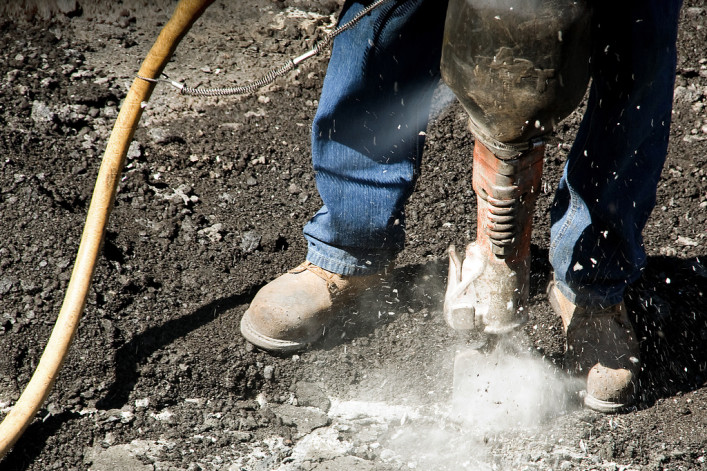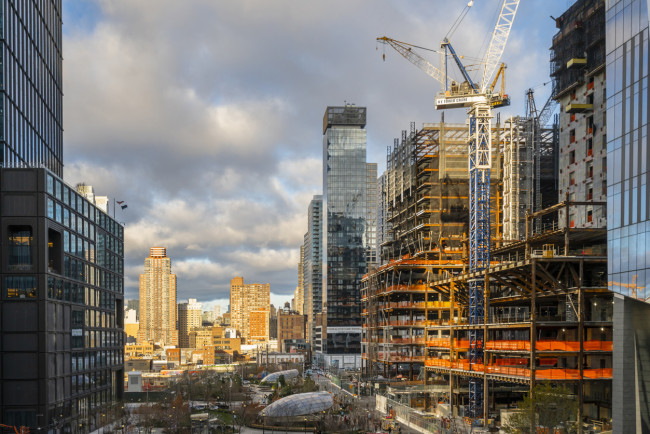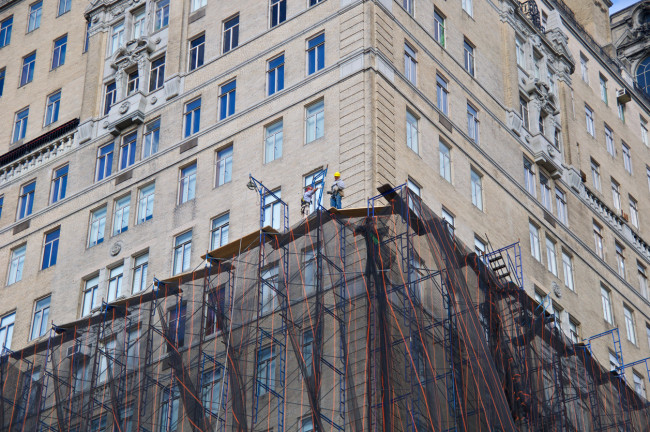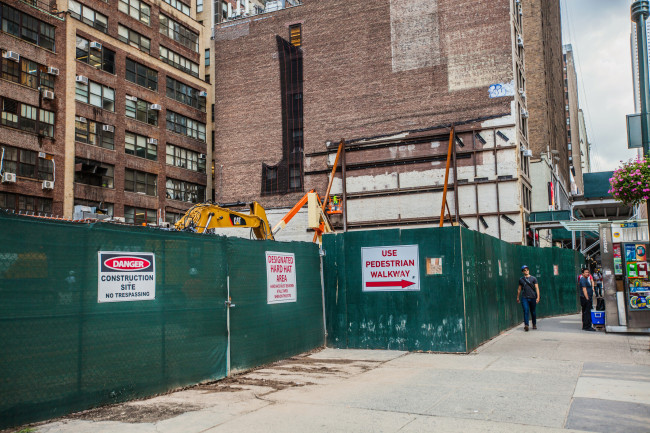7 ways to tell if construction is coming to your NYC neighborhood
- If you're concerned about a new development, you can contact your local community board to get more information
- You can keep track of construction projects through an online tool from the Department of Buildings
Change is inevitable in a city like New York, but it doesn’t have to be a surprise. The city is constantly being reshaped by construction projects that can dramatically impact the quality of life in a neighborhood.
“It’s rare to keep a place exactly as it has always been,” says Andrew Berman, executive director of the Greenwich Village Society for Historic Preservation, which tracks the status of applications for major changes to designated landmarks and historic districts in Greenwich Village, the East Village, and Noho. “People typically care about the character of a neighborhood they are moving to and want to maintain it, and should be aware of changes that are happening there. So you may find an apartment with an amazing view, but recognize that you may not have it forever.”
If you're contemplating a move and want to avoid waking up to jackhammers, or you just want to know what's happening around you, read on for seven ways to track building projects around Gotham.
[Editor's note: This article was originally published in April 2018. We are presenting it again with updated information for February 2024.]
1) Check out your local landmarks
Your local landmarks aren’t just great for sightseeing. These historic and culturally significant buildings are protected by the Landmarks Preservation Commission, and owners are required to get permission before working on landmarked buildings and buildings in historic districts.
Check out the commission’s map to find landmarked buildings near you. If you’re near a few, you can keep tabs on construction on any of those buildings through the commission’s public hearings calendar. You can also view pending permits through the organization’s online permit map.
2) Communicate with your community board
Many New Yorkers are unfamiliar with the city’s 59 community boards, which each consist of up to 50 un-salaried members. The boards' main role is to take complaints from community residents, but they also play an advisory role in land use and zoning issues, and they are typically aware of projects that will require public approval.
If you’re worried construction might be headed to your nabe, you can find your local community board through the NYC Mayor’s Community Affairs Unit’s website. Each board should have its own website, contact information, and schedule of public meetings.
3) Research your block
The city's Department of Buildings has a searchable, online database with a ton of information on Gotham’s buildings. You can use the Building on My Block tool to find new buildings, major alterations, and full demolition applications filed with the department for your community board, or search by a specific address.
If you live near a vacant lot, you may want to search that address specifically to see if any developer has filed plans for a new building. Professional engineers and registered architects are required to submit simple, 3-D representations of new buildings and enlargements, and those diagrams can tell you more about what new construction you can expect.
4) Watch the road
Street repair is also a consideration, especially for prospective owners and renters. Resurfacing projects are typically short-term projects that take less than a month. You can see the current resurfacing schedule online through the Department of Transportation.
Street reconstruction, however, may give a new renter or potential buyer pause. These projects replace over a foot of the roadway below the street’s surface and usually includes reconstruction of the curbs and sidewalks, and can take three to five years from conception to completion. That type of work is done by the Department of Design and Construction.
In both cases, once a street has been repaired, it becomes a protected street for five years, and the Department of Transportation will not issue a street opening permit there, except for emergency work or for repairs to potholes or other street defects. You can check out a list of protected sheets online here.
5) Keep an eye on public works
The Department of Design and Construction is also responsible for building the city’s public buildings, as well as smaller projects such as wheelchair ramps. The agency has a community outreach office that can answer questions and provide updates about ongoing projects in your neighborhood, or you can call 311 to ask about a specific location.
Most projects have a construction liaison assigned to help the resident engineer—responsible for the day-to-day activities at construction sites—address any community issues and concerns. You can send the Department of Design and Construction an email if you have questions about a project.
6) Map the future
If you want to do some serious sleuthing, you can also search "air rights by parcel" on PropertyShark's map tool to see which building owners have sold off their air rights.
Developers use air rights to build taller buildings than the city would otherwise allow. Tracking these transfers can indicate what kind of development is possible in the future, and whether a given neighborhood is poised for tons of development.
You can also research recent sales and mortgages through the Automated City Register Information System, or ACRIS for short. If a property near you trades hands, its new owner could have bigger plans for the existing lot or building.
7) Keep tabs on local laws
NYC’s laws, like its neighborhoods, are always evolving. New local laws occasionally add inspection requirements for buildings, resulting in some owners needing to do repair work to keep their properties safe.
For example, almost all NYC buildings need to have their parapets checked for unsafe conditions this year under Local Law 126, the same law that mandated parking garage inspections.
You can keep tabs on the city’s laws through the New York City Council, New York State Assembly, and state legislature. The assembly and legislature both allow you to sign up for email alerts for certain laws, and you can also contact your local city or state representatives online through their respective websites.
An earlier version of this article contained reporting by Jennifer White Karp.
You Might Also Like




























